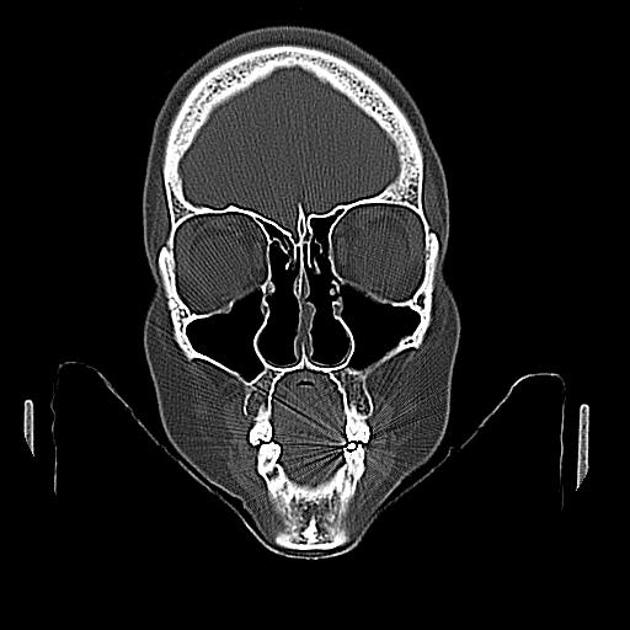The empty nose syndrome refers to a paradoxical sensation of nasal obstruction despite objectively patent nasal airways following inferior and/or middle turbinate resection.
On this page:
Epidemiology
The condition is rare, occuring in a minority of patients who have undergone prior turbinate resection.
Clinical presentation
The diagnosis is clinical. Patients complain of nasal obstruction, but the nasal airway appears patent on examination 2. Patients may also report dyspnea, nasal or throat dryness, nasal or facial pain, nasal crusting, decreased smell sensation, and depression 2.
Placement of a piece of cotton in the area of the resected turbinate decreases the symptoms (cotton test) 2.
Pathology
In the postoperative nose, there is decreased flow resistance, a colder and dryer microclimate, and redistributed airflow patterns 1. These changes may interfere with normal neurosensory mechanisms within the nasal cavity 4.
Radiographic features
CT
CT reveals a widely patent nasal cavity and evidence of prior turbinate surgery. Greater mucosal thickening in the central and posterior segments of the nasal septum has been associated with empty nose syndrome compared to patients who underwent inferior turbinate reduction without empty nose syndrome, but the diagnosis remains clinical 2.





 Unable to process the form. Check for errors and try again.
Unable to process the form. Check for errors and try again.